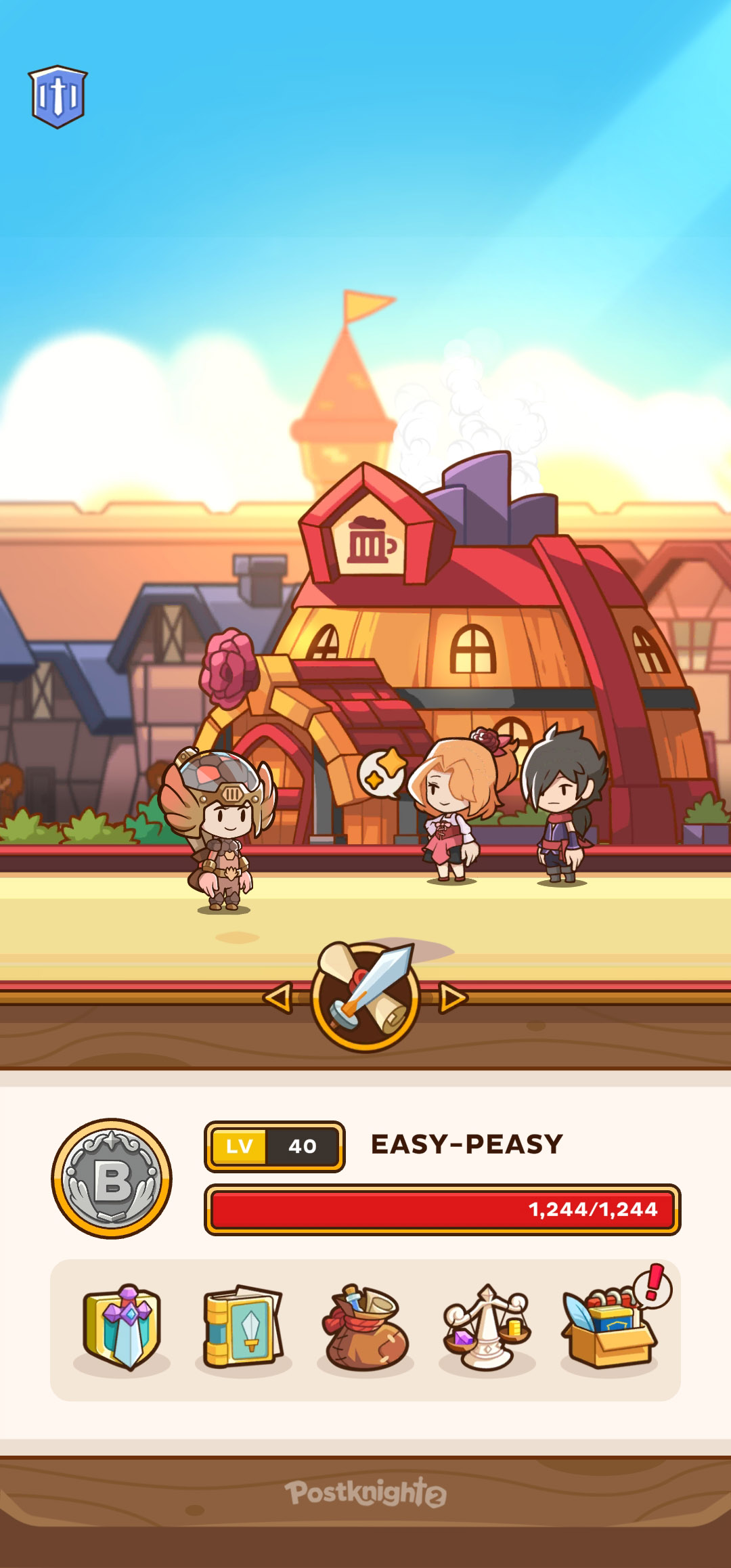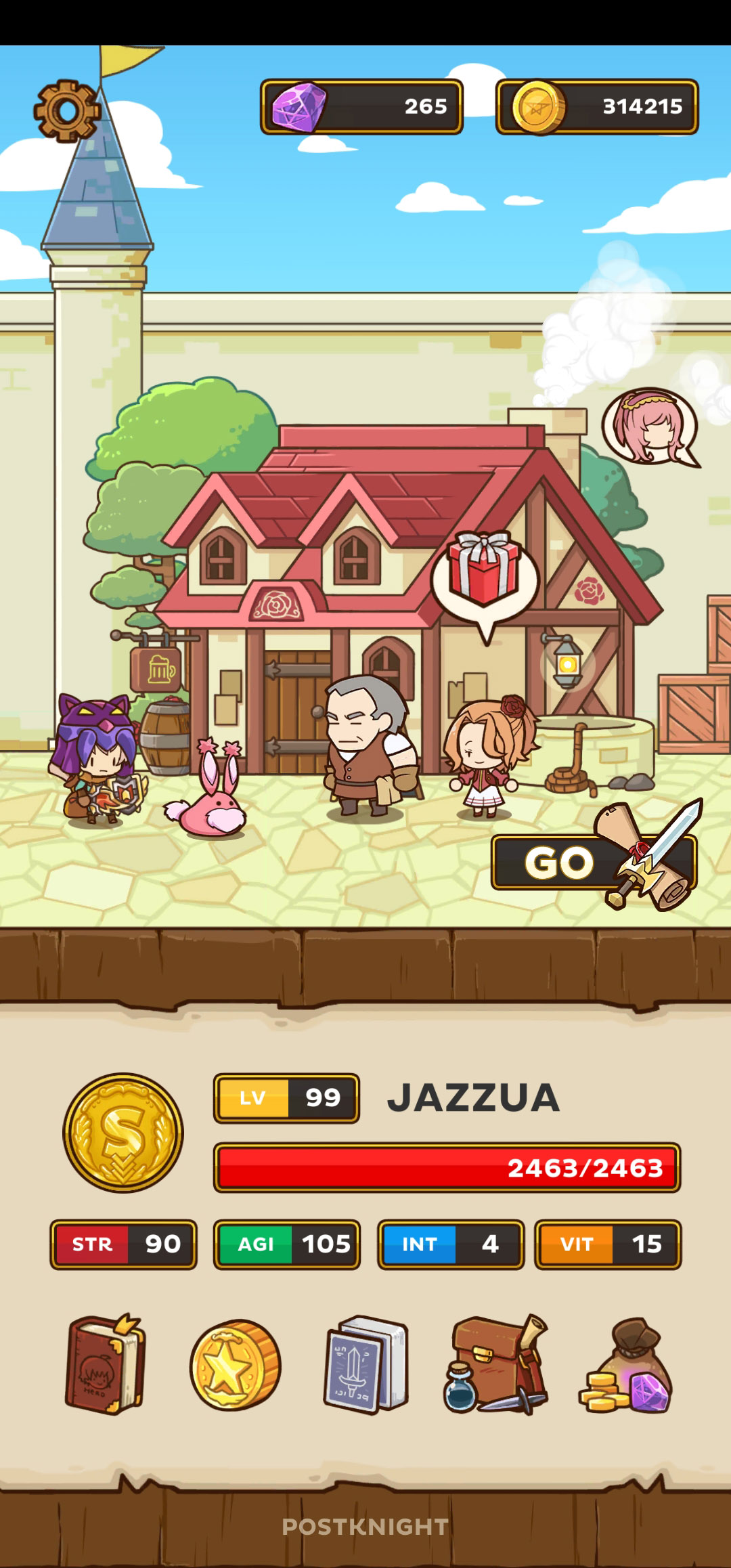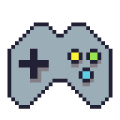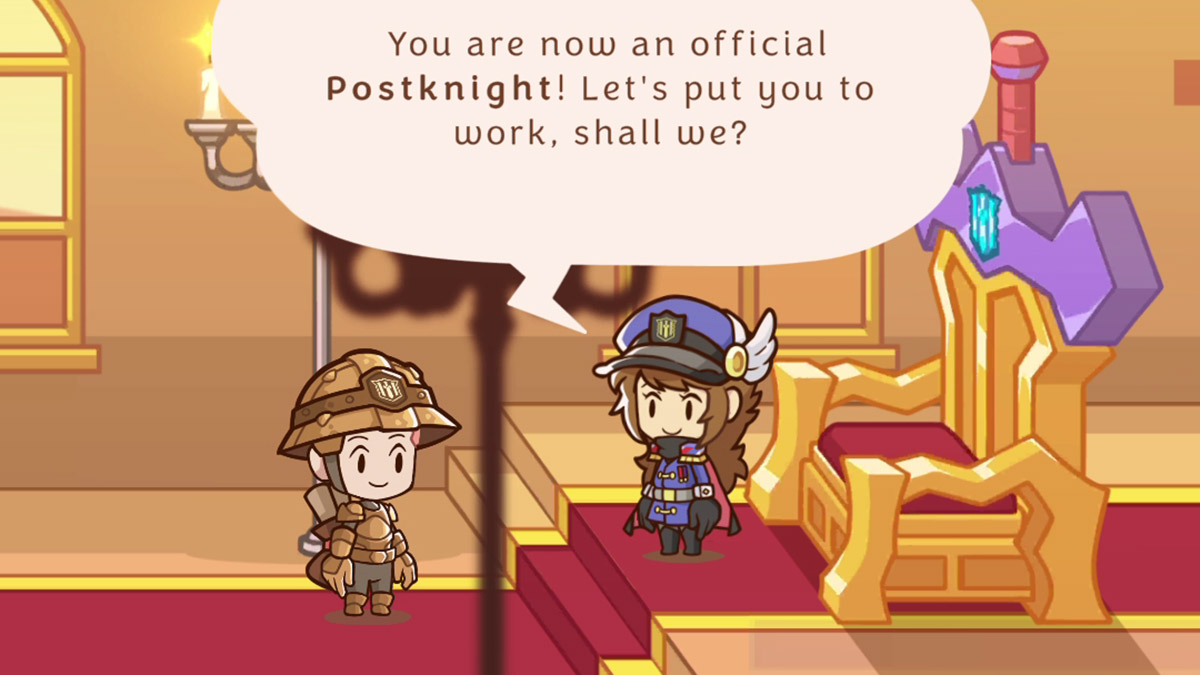I read once that there’s a hierarchy of video game platforms. It goes like this: PC gamers look down on console gamers, console gamers look down on handheld gamers and everyone looks down on mobile gamers. Kurechii completely upends this bias with their lovingly crafted mobile games.
Postknight 2, fresh out of Early Access on December 2nd, continues the Malaysian development studios lineage of excellence, with a game that offers a mountain of varied content, finely tuned systems and a deep lore underpinning its world. Even if you’re not a “mobile gamer”, this is one to try out if you love role playing games and adorable things.
What follows is my updated review of Postknight 2 after playing the game for many months over the Early Access period and now having played the full release for a few days. While I haven’t yet finished the full story as the game has only been out in full release for two days, I have had time to delve into some of the new play modes, start exploring the new story and enjoy a raft of improvements to the UI and other systems.
Overview

- Character build systems: You can now pick your character’s features and mix and match feminine and masculine outfits and styles. Weapon and build systems have also been expanded.
- Graphics and sound: The graphics have been refined throughout with much smoother animations and a more smooth, rounded look than the flatter grahics of the original.
- Movement and combat: Direct character movement control in towns has been added and there are now three distinct weapon systems with unlockable customisations.
- Narrative, questlines and relationships: Subplots for each area, varied characters, an overarching plot and expanded friendship/romance system.
- Extra Playmode: In addition to the story mode and delivery quests from the original game, you now get a rogue like dungeon crawler, potion perks and other neat extras.
- Monetisation: All for the very low price of free. Spending money in game is completely optional.
Character build systems

The opening of the first Postknight game had your character arriving at the Postknight Headquarters as a fresh recruit. Before jumping into your first quest, the only customisation available was the ability to name your recruit.
In Postknight 2, one of the big improvements you first notice is the much expanded character customisation at the start of the game. You are now able to pick from different hairstyles, facial features, colours and masculine/feminine clothing options. Another cool feature is the freedom to mix and match between female and male components, rather than being locked into simply picking a “boy” or a “girl” character.
As you play through the game and unlock armour and helmets, your customised hair and other features are quickly covered up so that you mostly don’t notice those customisations in gameplay. That being said, it’s still a great addition to the sequel to be able to craft your own unique character in more detail, helping to nurture an enhanced identification with your character from the onset of the game.
This expansion of character build customisation is also realised through a new combat system with three weapon type choices and a range of skill upgrades. I’ll discuss these new mechanics in the Movement and Combat section below.
Graphics and sound
Overall there seems to be a more refined aesthetic in the sequel. The colours are slightly muted and where there were hard lines in the first game, there are now softer edges, and an attempt at a less flat aesthetic through the use of blurred background graphics.
In an earlier version of this review, written during the first month of the game’s Early Access period, I noted that while the graphics and sound effects were still charming, they weren’t grabbing me in the same way the first games graphics and audio did. I’m pleased to report that after playing the game a lot more over the last year the new graphical style has definitely grown on me. There is a level of sophistication in the audio, and the graphics now that is a definite improvement on the original.

Postknight 2 – Caldemount 
Postknight – Caldemount
Movement and combat

Probably the biggest leap forward in the right direction for Postknight 2 comes in the form of a significant evolution in how you control your character in towns and how you fight with them in the trails.
Direct character control and fast travel
I absolutely love the new walking mechanism. Instead of just swiping left and right as you did in the first game, you can now directly control your character in town by dragging left and right on the level start button. There’s also a new fast travel mechanic which is incredibly satisfying to use and which makes shopping and character customisation a lot more efficient. Now, if you long-press on that same movement/level start button, a wheel of icons pops up representing points of interest in the town. Simply drag your thumb to one of those points and let go and your Postknight sprints to the location.

After playing Postknight 2 for a while, I went back to the original to compare how the games felt to play. I instantly missed the movement controls of the sequel. While the end result of both movement systems is the same – e.g. you move between different shopkeepers and other points of interest in towns – the actual feel of the experience is vastly different, and greatly improved. Somehow, being able to move your character freely left-to-right, at varying speeds, creates a wonderful feeling of agency. You really feel that you’re controlling the character.
Sword, hammer or daggers?
The new combat mechanics are fantastic and improve probably the biggest weakness of the original game. That being, that while there was a variety of builds afforded by varying combinations of equipment and skill loadouts. You were fundamentally doing exactly the same thing in every run (most of the time): hitting the charge, shield and potion buttons as quickly as they were available.
The mechanics have been improved in two significant ways –
- Combinations: After you hit the attack button, instead of just becoming unusable until the timer has run its course. There is now a secondary timer that runs, during which subsequent button presses trigger a follow-up action. For example, if you’re equipped with a sword and shield and you hit the shield button, for a few seconds afterwards if you press the attack button again you’ll carry out a big leaping smash, which will then cause both the shield and charge buttons to need a recharge interval. If you instead wait for the shield timer to run out before pressing the charge button you’ll do a smaller attack, but you’ll be able to hit the charge button a second time to carry out an extra charge without waiting for the lengthy cool-down timer. This creates the opportunity for split-second strategic decision making.
- Multiple weapon types: As well as the traditional sword and shield loadout from the first game, Postknight 2 now has daggers and hammers/axes. Each weapon class has their own unique playstyle with completely different mechanics for the attack and block buttons. For example, instead of being a simple lifted shield as is the case with the sword/shield loadout, pressing the block button while using the dual daggers leads to a brief parrying move. When timed correctly this can be a “perfect” parry which can trigger special unlockable skill effects such as briefly stunning your opponents. This variety in weapon choice adds a whole other dimension of choice and exploration to the game which is a definite improvement on the original.
With these gameplay changes, it’s amazing how much choice, strategy and nuanced combat that Kurechii has managed to achieve with a one-finger touch game. Watch the video below for an example of the hammer in action with its unique charge up and smash mechanic.
As well as the new weapons, and button mechanics. The weapon’s specific skill books and skill level-ups are an additional layer of customisation that you can unlock through the accumulation of gold and tokens. This means that as well as ranking up your postknight, tokens can now be used to purchase skill books from the rare-goods merchant Adrian. These skill books then give your postknight additional powers when using their weapon skills. This is another welcome addition to the combat mechanics which add a much needed depth to the gameplay.
Narrative, questlines and relationships
The friendship/romance mechanic in the first game was a great extra bit of fun and the reward of obtaining the illustrated memories was legitimately motivating because of the how gorgeous the drawings you got to collect were. One small annoyance was the fact that all friendship/romance options in the first game were girls.
I’m happy to report that in the sequel, you can now befriend male characters as well, and the friendship system has been expanded. You now not only exhange gifts with a range of NPCs and eventually unlock memories. Along the way to getting five lovehearts, you can unlock “events” which are small interactions in different environments with the object of your affection. This is a fantastic improvement to an already solid component of the Postknight universe. Some of the best writing and characterisation so far in the sequel has been found in conversation with the romanceable characters and it’s great to see the narrow gender focus of the first game expanded.

This attention to narrative improvement in the friendship mechanic is also carried over to the story missions. There are a number of characters involved in each area’s story missions and as the quests progress, you not only get to enjoy an unfolding story, but as in the first game, see an evolution in options available to you when you arrive back in town.
I like the structure of quest narrative in Postknight 2 which sees each area having an almost self-contained sub-plot that plays out through its levels. While at the same time, there’s a larger plot that links together the areas as you move through them. From a narrative point of view, the sequel is definitely an improvement and expansion on the first game.
Extra Playmodes
In addition to a new story set over a number of diverse areas (some old fan favourites and some completley new), there is now an additional play mode called ‘Explore’ which allows the player to explore the subterranean world of “Eventide Cove”. Here, your character can test their skills in a rogue-like series of dungeons. You see how far you can go before you succumb to the increasingly difficult enemies. Along the way you can temporarily upgrade your character in that run by choosing power ups at the end of each area. In between runs you can give yourself lasting skill boosts by making offerings at a sacred statue. While the core combat mechanics remain the same, the completely new structure of this game mode is a welcome addition to the game, offering a fresh take on the rogue-like genre within the Postknight universe.
Monetisation
There are a number of ways you can spend money in the game to support the developers, but none of these feel like “pay to win” and the player is never forced to stop playing or forced to watch ads. There is a “battle pass” mechanic called “Prism Pass” which offers free rewards for completing challenges within the game. As with other battle passes, you can pay to access an extra track of rewards. But this is purely optional as there is so much to do in the game and so many opportunities to earn gold and collect items that you could easily play through the entire game without spending a cent. If anything , I’m concerned that the devs haven’t pushed the monetisation hard enough. As a commercially succesful game means we get a longer lasting studio and more updates and new games in the future.
Summary
I’m hard pushed to find any negative points to raise about Postknight 2. The expansion of the character creation, movement and combat systems as well as a deeper relationship mechanic is a great leap forwards. Overall Kurechii hasn’t disappointed and remains, in my estimation, one of the best mobile game studios creating work today.
- Already playing Postknight 2 and want to know all the best spots to farm items? Check out our ultimate Postknight 2 item guide.
- Not sure what the perfect gift is for your in game bond character, check out our Postknight 2 Gifts: Relationship Gift Giving Guide.




